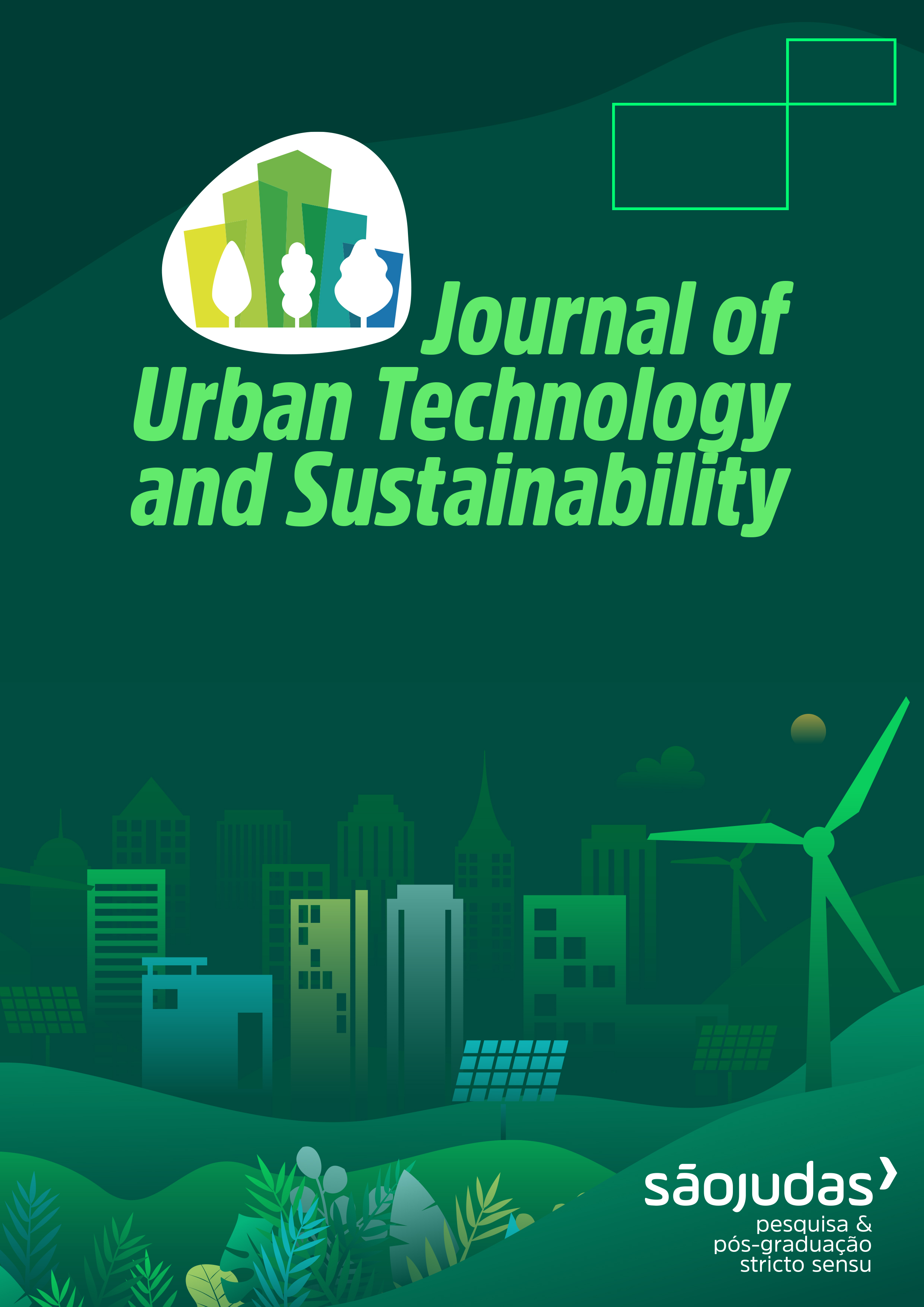APPLICATION OF GRAPHENE OXIDE IN CEMENTITIOUS COMPOSITES FOR CEMENT CONTENT REDUCTION
DOI:
https://doi.org/10.47842/juts.v1i1.6Abstract
Cement production is responsible for 5% of CO2 emissions worldwide. The concern about the pollution derived from the construction industry has brought attention to the need of developing more sustainable construction materials and processes. Admixtures based on nanometric graphene oxide have the potential to enhance mechanical properties and durability of cementitious composites. In this context, an experimental program was conducted to evaluate how the addition of graphene oxide may be used to reduce cement content in concretes, maintaining the same mechanical properties of conventional concretes (control matrices, with no graphene oxide additions). Kinetics of hydration of cement pastes was evaluated by isothermal calorimetry, phase evolution during hydration was determined by X-ray diffraction coupled with quantitative Rietveld analysis and mechanical properties were evaluated by compressive strength. Results indicate that graphene oxide additions provide a faster hydration rate until 24 h and generate a larger amount of C-S-H gel, increasing mechanical strength of the matrix. By the addition of graphene oxide dispersion (0.4% of solid content) at 0.02% by cement weight, cement content reductions of up to 15% may be achieved, maintaining the same compressive strength as the control matrices. From this research, a reduction in cement content to obtain more sustainable construction materials and processes may be achieved.
Downloads
References
[2] A. Hasanbeigi, L. Price, E. Lin, Emerging energy-efficiency and CO2 emission-reduction technologies for cement and concrete production: A technical review, Renew. Sustain. Energy Rev. 16 (2012) 6220–6238. doi:10.1016/j.rser.2012.07.019.
[3] B. Lothenbach, K. Scrivener, R.D. Hooton, Supplementary cementitious materials, Cem. Concr. Res. 41 (2011) 1244–1256. doi:10.1016/j.cemconres.2010.12.001.
[4] S. Sinyoung, K. Kunchariyakun, S. Asavapisit, K.J.D. MacKenzie, Synthesis of belite cement from nano-silica extracted from two rice husk ashes, J. Environ. Manage. 190 (2017) 53–60. doi:10.1016/j.jenvman.2016.12.016.
[5] T.L. Ávalos-Rendón, E.A.P. Chelala, C.J. Mendoza Escobedo, I.A. Figueroa, V.H. Lara, L.M. Palacios-Romero, Synthesis of belite cements at low temperature from silica fume and natural commercial zeolite, Mater. Sci. Eng. B Solid-State Mater. Adv. Technol. 229 (2018) 79–85. doi:10.1016/j.mseb.2017.12.020.
[6] N.R. Rakhimova, R.Z. Rakhimov, Reaction products, structure and properties of alkali-activated metakaolin cements incorporated with supplementary materials - A review, J. Mater. Res. Technol. 8 (2019) 1522–1531. doi:10.1016/j.jmrt.2018.07.006.
[7] L. Senff, J.A. Labrincha, V.M. Ferreira, D. Hotza, W.L. Repette, Effect of nano-silica on rheology and fresh properties of cement pastes and mortars, Constr. Build. Mater. 23 (2009) 2487–2491. doi:10.1016/j.conbuildmat.2009.02.005.
[8] M. Rupasinghe, R. San Nicolas, P. Mendis, M. Sofi, T. Ngo, Investigation of strength and hydration characteristics in nano-silica incorporated cement paste, Cem. Concr. Compos. 80 (2017) 17–30. doi:10.1016/j.cemconcomp.2017.02.011.
[9] S. Ghazizadeh, P. Du, N.T. Skipper, Y. Bai, Understanding the behaviour of graphene oxide in Portland cement paste, Cem. Concr. Res. 111 (2018) 169–182. doi:10.1016/j.cemconres.2018.05.016.
[10] R.P. Salvador, D.A.S. Rambo, R.M. Bueno, K.T. Silva, A.D. de Figueiredo, On the use of blast-furnace slag in sprayed concrete applications, Constr. Build. Mater. 218 (2019) 543–555. doi:10.1016/j.conbuildmat.2019.05.132.
[11] ASSOCIAÇÃO BRASILEIRA DE NORMAS TÉCNICAS, NBR 5738: Concreto - Procedimento para moldagem e cura de corpos de prova, 2015. doi:01.080.10; 13.220.99.
[12] R. SNELLINGS, X-ray powder diffraction applied to cement, in: A Pract. Guid. to Microstruct. Anal. Cem. Mater., CRC Press, 2015: pp. 107–176. doi:doi:10.1201/b19074-5.
[13] M.H. Maciel, G.S. Soares, R.C. de O. Romano, M.A. Cincotto, Monitoring of Portland cement chemical reaction and quantification of the hydrated products by XRD and TG in function of the stoppage hydration technique, J. Therm. Anal. Calorim. (2018). doi:10.1007/s10973-018-7734-5.
[14] ASSOCIAÇÃO BRASILEIRA DE NORMAS TÉCNICAS, NBR 5739: Concreto - Ensaio de compressão de corpos de prova cilíndricos, 2018. doi:01.080.10; 13.220.99.
[15] R.P. Salvador, S.H.P. Cavalaro, M.A. Cincotto, A.D. De, Parameters controlling early age hydration of cement pastes containing accelerators for sprayed concrete, Cem. Concr. Res. 89 (2016) 230–248. doi:10.1016/j.conbuildmat.2016.02.101.
Downloads
Published
How to Cite
Issue
Section
License
Copyright (c) 2018 Renan Pícolo Salvador, Roberto Munhoz Bueno, Dimas Alan Strauss Rambo, Sandro Martini

This work is licensed under a Creative Commons Attribution 4.0 International License.
- O(s) autor(es) autoriza(m) a publicação do artigo na revista;
O(s) autor(es) autoriza(m) a publicação do texto na da revista;
O(s) autor(es) garantem que a contribuição é original e inédita e que não está em processo de avaliação em outra(s) revista(s);
A revista não se responsabiliza pelas opiniões, ideias e conceitos emitidos nos textos, por serem de inteira responsabilidade de seu(s) autor(es);
É reservado aos editores o direito de proceder a ajustes textuais e de adequação às normas da publicação.
Autores mantém os direitos autorais e concedem à revista o direito de primeira publicação, com o trabalho simultaneamente licenciado sob a Creative Commons Atribuição-NãoComercial 4.0 Internacional que permite o compartilhamento do trabalho com reconhecimento da autoria e publicação inicial nesta revista.
Autores têm autorização para assumir contratos adicionais separadamente, para distribuição não-exclusiva da versão do trabalho publicada nesta revista (ex.: publicar em repositório institucional ou como capítulo de livro), com reconhecimento de autoria e publicação inicial nesta revista.
Autores têm permissão e são estimulados a publicar e distribuir seu trabalho online (ex.: em repositórios institucionais ou na sua página pessoal) a qualquer ponto antes ou durante o processo editorial, já que isso pode gerar alterações produtivas, bem como aumentar o impacto e a citação do trabalho publicado (Veja O Efeito do Acesso Livre)


















